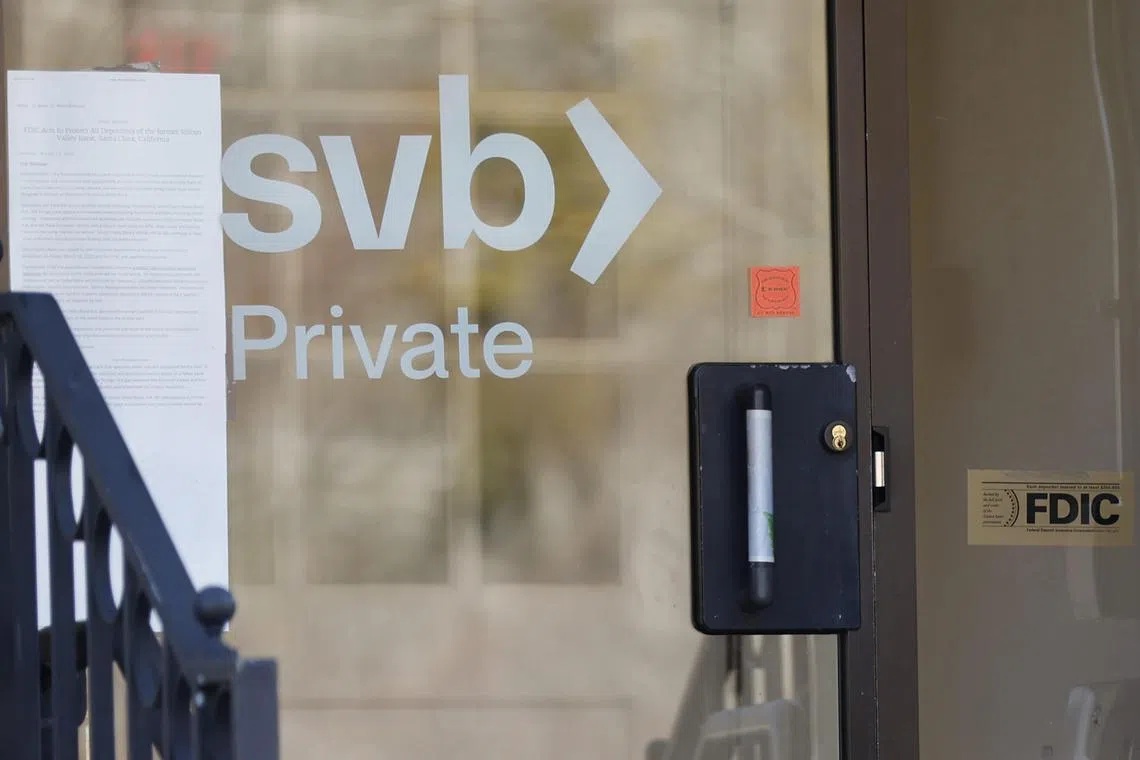Fed official tells US Congress many to blame for Silicon Valley Bank failure
Sign up now: Get ST's newsletters delivered to your inbox

The failures of SVB, and days later, Signature Bank, stoked fears of a full-blown financial crisis.
PHOTO: EPA-EFE
Follow topic:
WASHINGTON - The scope of blame for Silicon Valley Bank’s (SVB) failure
“I think that any time you have a bank failure like this, bank management clearly failed, supervisors failed and our regulatory system failed,” Mr Michael Barr, Fed vice-chair for supervision, told Congress. “So we’re looking at all of that.”
The failures of SVB, and, days later, Signature Bank, set off a broader loss of investor confidence in the banking sector that pummelled stocks and stoked fears of a full-blown financial crisis.
Depositors tried to pull more than US$42 billion (S$55.8 billion) in a single day at SVB in early March, surprising regulators and kicking off deposit flight across other regional banks.
“That’s just an extraordinary scale and speed of a run that I had not ever seen,” Mr Barr said.
“I think all of us were caught incredibly off guard by the massive bank run that occurred when it did.”
Representatives from both political parties pressed Mr Barr, Mr Martin Gruenberg, head of the Federal Deposit Insurance Corp (FDIC), and Treasury undersecretary for domestic finance Nellie Liang on why regulators did not act more forcefully, given Fed supervisors had been raising issues with the bank for months.
“There is still much we need to understand of what you knew when and how you responded,” said Republican Patrick McHenry, chair of the committee. “The bottom line for you as the panel, there’s bipartisan frustration with many of your answers. There’s a question of accountability and appearance of lack of accountability.”
Mr Barr on Tuesday criticised SVB for going months without a chief risk officer and for how it modelled interest rate risk, but lawmakers said the response was not aggressive enough, with Democrat Juan Vargas saying, “it seems like they blew you guys off, and you didn’t do anything”.
Both the Fed and FDIC are expected to produce reports on the failure of SVB by May 1.
The Fed’s report will concentrate on supervision and regulation, while the FDIC report will centre around deposit insurance.
All three testifying said that regulators had sufficient tools to deal with the crisis once it happened, but Mr Barr said the Fed could have done better on supervision.
SVB and Signature became the second- and third-largest bank failures in US history.
Investors fled to safe havens like bonds, while depositors moved funds to bigger institutions and money market funds.
Markets have calmed since Swiss regulators engineered the sale of troubled Swiss giant Credit Suisse to rival UBS,
However, investors remain wary of more troubles lurking in the financial system.
Some Democrats have also argued a 2018 bank deregulation law is to blame.
That law, mostly backed by Republicans but also some moderate Democrats, relaxed the strictest oversight for companies holding between US$100 billion and US$250 billion in assets, which included SVB and Signature.
The White House is readying plans for legislation that would reinstate those regulations on mid-size banks, the Washington Post reported on Wednesday, citing two sources familiar with the matter. REUTERS

